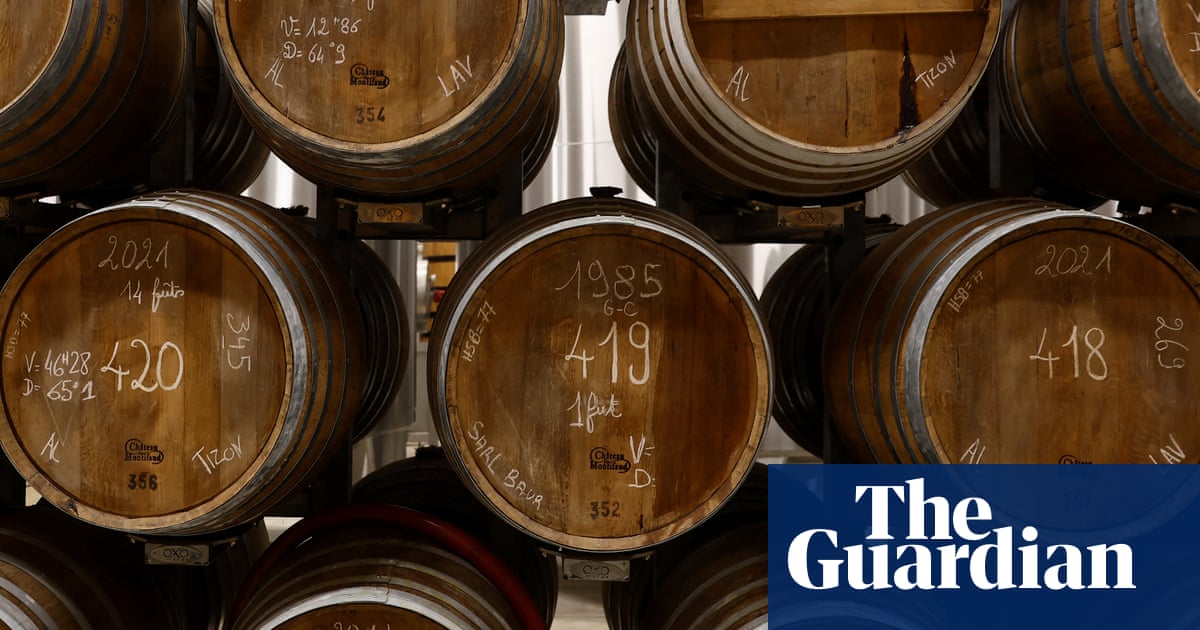I have three decades in the wine and booze industry. I have worked it at all levels in the USA. This is the biggest load of unscientific horseshit imaginable.
Terroir is the notion that the climate and surrounding conditions can impart specific unique flavors to grapes grown in a specific place. The grapes part is key because grapes, unlike many other plants, can make wine just using itself and maybe some water. The idea that wine barrels, whose trees come from places like the USA rather than this specific three hectare area in Ohio, can have a sense of terroir is laughable.
Yes American oak and French oak have different tastes but it isn’t as if I could put a glass of whiskey in from of an expert and have them guess where the wood came from whereas doing so is a common test for grapes in wine.
I honestly have no idea what you are talking about.
Terroir applies to many things. A sheep cheese made in the same style on the island of Pag in Croatia, and one in Iberia are not the same. Likewise, a San Marzano tomato grown in Australia is not the same. AOC, DOC, PDO, and many classifications exist for reasons beyond protectionism. In any case that’s not what the article is about.
Yes American oak and French oak have different tastes but it isn’t as if I could put a glass of whiskey in from of an expert and have them guess where the wood came from whereas doing so is a common test for grapes in wine.
Nowhere do I see that contested in the article, in fact it says the opposite.
No one at Tucson’s Hamilton Distillers knows exactly what wood the cognac barrels holding whiskey are made of.
“Probably Spanish oak?” one employee ventures a guess.
The article, which obviously I found interesting, is about the journey of a barrel. I thought others might find it interesting as well. I had no idea they were as long lived, or put to so many uses.
Terroir is a concept from wine that the site that the grapes are grown in carry specific traits that are inherent to that place. For example any grape grown on the Rutherford Bench in Napa Valley seems to carry hints of mint and raspberry. Grapes grown two miles outside of the Rutherford Bench that are clones of ones in the Bench appellation do not gave these notes. That notion of flavor specific to place is what terroir is.
The idea that American Oak expresses terroir rather than species specific traits is not logical. You aren’t going to find someone who can tell if an oak for a barrel is harvested in Michigan vs Kentucky whereas you can find people who can identify which 3 acre parcel of land in Burgundy a wine came from.
Lots of other groups have glommed onto the notion of terroir but it is all marketing bullshit for the most part.
I know terroir is a marketing point, that’s without question. But, that’s not the focus of the article.
Terroir originally applied to grapes, it now applies to many more things. I can tell you, IMHO, where the best cashews come from, or peanuts, oregano, avocados, sumac, buckwheat, or sage. The same things apply to other crops besides grapes. The Côte Chalonnaise vs Côte d’Or is real, as is the difference between Yerba Mate from Paraguay vs from Brazil.
The idea that American Oak expresses terroir rather than species specific traits is not logical.
Ok, I don’t know enough about it. Is that stated in the article though? Because I can’t find it. Even if it did say that (spoiler, it does not) I would not find that very surprising. I have been mushroom picking and I said ‘there’s a bunch here’ and they said ‘don’t bother, they’re shit’. The difference was one side of a 20 metre valley to the other. Soil, sun, drainage, and a lot more really matter.
“Terroir originally applied to grapes, it now applies to many more things. I can tell you, IMHO, where the best cashews come from, or peanuts, oregano, avocados, sumac,”
Where you think the best version of x cones from has nothing to do with terroir. Terroir is the idea that cashews grown in this one specific place will always have traits that cashews of the same exact variety planted in a different place next door will not have.
“ Côte Chalonnaise vs Côte d’Or is real, as is the difference between Yerba Mate from Paraguay vs from Brazil.”
That again isn’t inherent to terroir as Brazil and Paraguay are far too large to talk about distinctions that come from a specific place.
To be clear I have colleagues who can tell you precisely which year and vineyard, not just winery, specific wines came from because of taste alone. That is what terroir imparts an American oak tree won’t have this and doesn’t have terroir much like coffee, tea or hops do not.
Grapes grown two miles outside of the Rutherford Bench that are clones of ones in the Bench appellation do not gave these notes. That notion of flavor specific to place is what terroir is.
That again isn’t inherent to terroir as Brazil and Paraguay are far too large to talk about distinctions that come from a specific place.
How is your second statement true? Its exactly the Côte discussion, if opposite sides of a valley matter then larger distances do as well. Terroir is about a specific place, it does not matter if the distance is 2 miles or a thousand, terroir is the difference.
If you want to argue that terroir is more important in some crops and less in others I would agree.
No, distance does matter because American oaks planted in Europe still taste like American oak. If oak was impacted by terroir the American Oak planted in Europe should show flavors closer to the European Oak than American Oak does. As that does not happen it is aafe to say terroir has no impact on oak flavors.
I hate to ask, but did you actually read the article? The word terroir is used twice, both times attributed to the same person.
Terroir is not what the article is about.
This was pretty interesting! Really makes me wanna try some of this fancy booze. Definitely one lucky journalist…traveling the world following barrels of liquor. Cheers!
I’ve never seen a word terroir written before, only spoken, so it converted into “terror rich” in my mind, phrases like that make you click on an article. 😄


